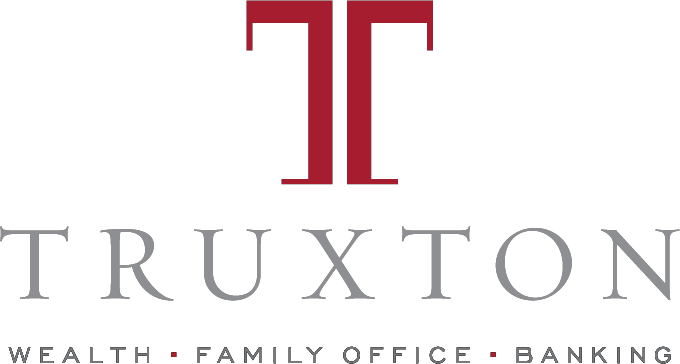On Private Credit

The hot new shiny object in finance is Private Credit. But, this new asset class, in its “golden age”, is not all that new. According to Bloomberg News, “private credit can be traced back to the 1980s, when insurance companies began lending directly to companies with strong borrowing records. Today, private credit funds deploy billions of dollars in a variety of investing strategies: direct lending, distressed lending, venture debt, mezzanine finance, and special situations.” These five lending strategies have gone from $500 billion in AUM in 2015 to an estimated $1.7 trillion in 2023 and are forecasted to hit $3.5 trillion by 2028. There are many different players employing myriad strategies ranging in size, industry, geography, etc. For this article, we focus on the Lower Middle Market (LMM), which is broadly defined as borrowers that are doing $3mm-$15mm in EBITDA.
Truxton, principally through Truxton Capital Advisors (TCA), serves LMM companies three ways: (1) Corporate debt, (2) Sell-side advisory, and (3) Private Credit. We sell family or owner operated businesses, lend off our bank balance sheet, place debt with other lending institutions, and invest through our own direct private credit efforts almost exclusively to companies of this size and scope.
So, why does a small company need debt?
For the same reasons as large companies:
- Financing growth (i.e. a new manufacturing facility or new outpatient healthcare centers)
- Recapitalization (refinancing existing debt, dividends, minority
buy-outs) - Mergers & acquisitions (leverage buyout, management buyout, bolt-on acquisitions)
These can be spearheaded by the family owners of a business or a financial sponsor, whether that be a traditional private equity fund, stand-alone family office doing direct investment, or an independent (we used to say “fundless”) sponsor.
Who lends to these borrowers?
Traditionally, the main players have been banks, business development companies (BDCs), small business investment companies (SBICs), and traditional private credit funds. Let’s examine each of these players on a historic and current basis.
Banks
Banks have pulled back sharply from LMM corporate lending. Banks do the lowest risk lending at the most senior capital position. In normal markets, a bank will extend senior debt at 2-3x leverage to last-twelve-months EBITDA plus a 0.5x revolving line of credit to the last twelve months EBITDA for established LMM companies, especially if they are backed by private equity or family offices. Banks prefer lending to old world economy companies with asset-heavy balance sheets.
Over the past 18-24 months, mainly since Silicon Valley Bank went bust, mid-sized local and regional banks have vanished from this arena. The rapid increase in rates leading to fears of an impending recession and asset/liability challenges, along with regulatory scrutiny, has caused banks to either move “up market”, hold leverage to 2x, or exit the LMM space entirely. This credit crunch has created an opportunity for LMM private credit.
Non-bank lenders in the LMM world take several corporate forms.
Business Development Companies
BDCs are a 1980’s innovation for business lending. They are typically publicly traded, raising their equity capital through stock offerings. They lever this equity with warehouse loans from banks and/or bond issuances, lend across the capital structure, and take minority equity investments in diversified industries in the LMM. BDCs, like real estate investment trusts, must distribute 90% of their income as dividends to avoid income taxes (dividends are taxed at ordinary income rates). BDCs range from behemoths like Ares Management Corp (NYSE: ARES) to ones that have an emphasis on LMM family held operating companies such as Main Street Capital Corp (NYSE: MAIN). BDCs have an established track record as an investment vehicle providing access to capital for growing businesses and allowing for everyday investors to have liquid exposure to private credit. But many of these companies have also moved up market, exacerbating the credit crunch in the lower middle market.
Small Business Investment Companies
SBICs are one of the most interesting and, until recently, lesser-known financing options for small businesses. These firms are licensed participants in a longstanding program of the Small Business Administration (SBA). SBICs funds raise equity and borrow, through the SBA, at a steep discount to market rates.
SBICs take advantage of conditions that flow from their regulatory status. But functionally, they are competitive LMM lenders.
An experienced lending team applies to the SBA to offer a fund licensed as an SBIC, a complex and uncertain process, even for those who’ve been in the industry for years. If granted, the license comes with investment restraints and a regulatory reporting burden but allows the fund to borrow 10-year debentures from the government at a relatively small spread to US Treasury’s own issuances. The fund sponsor raises equity from many sources but has a particular advantage with banks. Forbidden from investing in most private funds, banks are explicitly allowed to invest in SBIC funds and can receive “credit” in the Community Reinvestment Act exams for their equity commitments. The fund generally charges a management fee on all the committed capital including the below market debt, making the economics very attractive for the partners, even in a small fund.
Truxton invests in SBICs for their profit potential, but also for co-investment opportunities. Nashville, always an entrepreneurial town, has a great ecosystem of SBICs with excellent and long-standing track records.
Traditionally, SBICs were mezzanine lenders. This means they did higher coupon and riskier loans that sat between banks and equity, while usually taking a piece of the equity as well. They served a great purpose in the market but had a limited role. With the credit crunch, the market lacks senior lenders. The SBICs have been opportunistic and have had their pick of “bankable” senior loans and have unexpected pricing power due to rising benchmark rates (while their internal leverage often remains low). We should be grateful they were there to play a vital role of liquidity for a market that desperately needed it. This same phenomenon has happened across most of the capital markets in the US, not just for SBICs, but also for most forms of Private Credit.
Private Credit Funds
True PC funds raise money from individuals and institutions and invest it across a broad range of verticals via debt or equity, or a mix, across the capital structure. They can employ internal leverage, or not, and returns and risk are relative to their place in the capital stack. They operate outside of the more heavily regulated atmospheres of the players above, which can be a good or bad thing depending on who you ask.
So, what’s next?
No asset class is safe from an over influx of cash “supply” and limited places to deploy said cash “demand.” There are only so many good companies to lend money to after all. Private credit operators that have successful track records, industry and name recognition, and especially great economic infrastructure will continue to outperform. Banks aren’t diving back in any time soon wholeheartedly. You’ll see spreads tighten but good operators should still have plenty of opportunity.
What’s Truxton’s role?
Truxton Capital Advisors saw the developments above occurring in real time and the need for credit providers, especially in the check size range of $4mm-$10mm. TCA runs two strategies in this range: direct with management or co-investment.
Direct is when a private business either needs money for growth, is not quite bankable, or needs more capital than banks can provide to said company. Truxton raises money from our network of investors, lends the money as interest-only debt at a higher rate, then takes a position of equity in the company via warrants or shares. An example of this is our BasePoint Academy investment, which continues to perform extremely well.
Co-investment is when a financial sponsor and/or SBIC/BDC are completing a transaction and there’s a gap in their capital structure that we can fill. Since this product is not a dedicated fund, Truxton can be flexible on taking anywhere from 80% debt/ 20% equity to the reverse and everything in between. With this flexibility, TCA can help finance a transaction we like in a way that works for our investors, us, and our partners. This also allows our qualified accredited investors who have invested in alternative fund structures to make decisions on a company-by-company basis and feel more directly involved.
Truxton is not a volume shop. We aspire to execute 2-4 of these investments per year. Instead of leveraging a dedicated fund, TCA syndicates on a deal-by-deal basis; meaning that deal selection and volume are based on our own conviction, not because we must deploy money raised. We prefer management teams and/or sponsors that have a track record of successful exits, serve in industries and verticals where we have extensive experience, and operate in states that are business-friendly. TCA will only engage in opportunities that give our investors an advantage in multiple ways. With banks pulling back, a record amount of dry powder in dedicated private equity funds, and increased reliability and institutionalization of independent sponsors, there is a long runway of opportunity to make outsized returns in private credit for experienced capital.
If you’re interested in learning more about any of the topics discussed or more detail on Truxton’s private credit strategy, please feel free to reach out to us at philip.skipp@truxtontrust.com.
